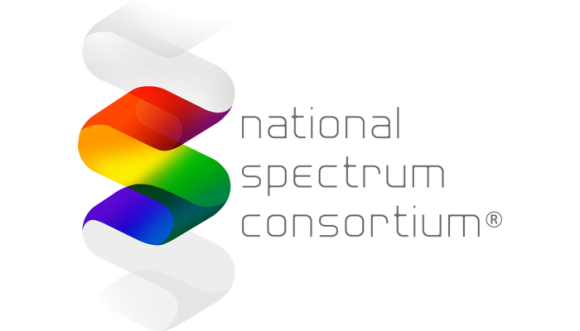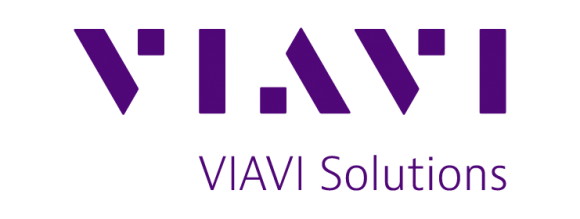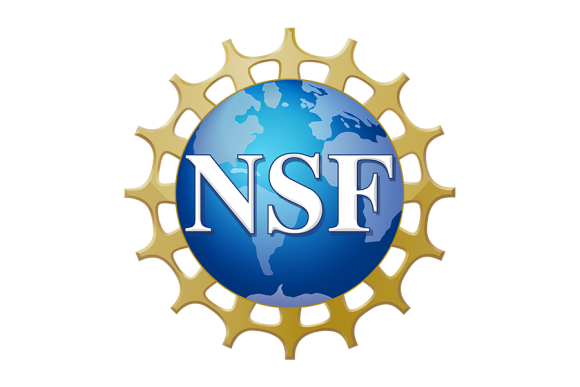Monday, May 13th, 2024
8:30 - 10:15: Riding the New Wave: Spectrum Strategies for the 5G and 6G Era
10:15 - 10:30: Coffee break
10:30 - 12:15: Coexistence and Spectrum Sharing Above 100 GHz: Opportunities, Challenges and Solutions
12:30 - 1:30: Lunch
1:30 - 3:15: Understanding O-RAN: A Tutorial on Architecture, Interfaces, Algorithms, Spectrum Sharing, and Research in Colosseum
3:15 - 3:30: Coffee Break
Thursday, May 16th, 2024
8:30 - 10:15: Machine Learning for Security and Security for Machine Learning in Spectrum Operations
10:15 - 10:30: Coffee break
10:30 - 12:15: Open AI Cellular (OAIC): An Open-Source AI-based O-RAN Platform & Framework Enabling 6G Wireless Research
12:30 - 1:30: Lunch
1:30 - 3:15: Interference Management and Medium Access Techniques for Dependable Communications in the 6G Era
3:15 - 3:30: Coffee Break
3:30 - 5:00: Learning-Aided mmWave/THz Communications and Sensing
Tutorial abstracts:
Riding the New Wave: Spectrum Strategies for the 5G and 6G Era
Speakers: Mischa Dohler (Ericsson Inc, USA); Monisha Ghosh (University of Notre Dame, USA); Ira Keltz (FCC, USA); Charles Cooper (NTIA, USA)
The tutorial offers a well-timed and comprehensive overview of timely issues pertaining to wireless spectrum, highlighting its pivotal role from 5G advancements to the anticipated realms of 6G. We will guide participants through the evolution of mobile communication, laying a foundational understanding of spectrum basics before delving into the intricacies of 5G spectrum, including licensing, auctions, and current usage challenges. As we look to the future, the session will explore the potential landscape of 6G, discussing anticipated features, spectrum sharing, and coexistence strategies. Key technological innovations such as beamforming, cognitive radio, and AI in spectrum management will be highlighted, illustrating their impact on emerging applications in areas like the Metaverse, telemedicine, and defense. The tutorial will also address the critical challenges in spectrum management, including scarcity, interference, and international harmonization. Concluding with an interactive Q&A session, this tutorial promises to provide a rich blend of knowledge, practical insights, and foresight into the future of wireless communication technology.
Coexistence and Spectrum Sharing Above 100 GHz: Opportunities, Challenges and Solutions
Speakers: Josep M Jornet (Northeastern University & Institute for the Wireless Internet of Things, USA); Michael J. Marcus (Northeastern University, USA & Marcus Spectrum Solutions LLC, USA); Vitaly Petrov and Michele Polese (Northeastern University, USA)
Spectrum above 100 GHz is attractive for applications needing contiguous bandwidths greater than 20 GHz. These include, among others, fronthaul and backhaul alternatives for optical fiber in situations where time urgency, difficult terrain, or other reasons make the fiber link (with low material cost) infeasible. However, unlike what many theoretical studies on beyond-100GHz wireless (including sub-terahertz and terahertz bands) assume, allocating 20 GHz or more of continuous spectrum above 100 GHz is non-trivial. Unlike the lower spectrum, above 100 GHz, there is a high density of passive bands due to the presence of many molecular resonances of critical interest to climate scientists and radio astronomers. Back in 2000, when the ITU created most of these bands, at the request of both US and European countries, it also agreed to their requested review of whether carefully controlled sharing of such passive bands was feasible.
Understanding O-RAN: A Tutorial on Architecture, Interfaces, Algorithms, Spectrum Sharing, and Research in Colosseum
Authors:
Understanding O-RAN, its architecture, interfaces, and tools becomes of paramount importance for researchers and practitioners in the wireless community. With this tutorial we intend to provide a comprehensive introduction to O-RAN, including a clear overview of the potentials of the Open RAN paradigm and of the challenges to its realization. We will specifically focus on how open and programmable components enable spectrum and infrastructure sharing, with lessons learned from our deployment of a fully automated neutral host infrastructure based on Open RAN primitives. We will also present the tools that can be used for experimental research in the O-RAN domain, using Colosseum – the world's largest wireless network emulator with hardware in the loop – and our OpenRAN Gym framework for the design of end-to-end experiments for intelligent O-RAN networks.
Enabling dynamic spectrum management, dynamic spectrum access, and spectrum sharing: The IEEE 1900.5.2 Standard for Modeling Spectrum Consumption
Speakers:Carlos E. Caicedo Bastidas (Syracuse University, USA); John A. Stine (The MITRE Corporation, USA)
The IEEE 1900.5.2 Standard for Modeling Spectrum Consumption is poised to be a key component of planning, understanding, and executing dynamic spectrum management. The standard defines a data model for spectrum consumption models (SCMs) and the criteria to arbitrate compatibility among combinations of RF devices and/or systems that have expressed the boundaries of their spectrum use with SCMs. SCMs built in accordance with IEEE 1900.5.2 allow spectrum users to describe their anticipated use of spectrum so that the various stakeholders can understand and resolve conflicts enabling key processes for the management of Dynamic Spectrum Access and spectrum sharing. SCMs are ideal for users to negotiate boundaries for spectrum sharing and spectrum trading. Their modeling methods were designed to make compatibility computations tractable and so SCMs enable the creation of algorithms to optimize the use of spectrum across multiple users. SCMs are machine readable and can be used to provide spectrum use policy to spectrum dependent systems (SDSs) for autonomous selection of RF channels and/or collaboration in the use of shared spectrum.
Machine Learning for Security and Security for Machine Learning in Spectrum Operations
Speakers: Sastry Kompella (NEXCEPTA INC, USA); Yalin E Sagduyu (Virginia Tech, USA)
The proposed tutorial aims to provide a comprehensive exploration of the intricate relationship between machine learning and security in the context of spectrum sensing, access, sharing, and utilization across emerging wireless technologies. Divided into two synergistic parts, the tutorial navigates participants through the applications of machine learning for wireless security and the vulnerabilities of machine learning in the context of adversarial attacks in the wireless domain. The first part delves into the practical use of deep learning, reinforcement learning, and federated learning to characterize vulnerabilities of the emerging spectrum operations and enhance security in dynamic spectrum access networks. Covering a broad range of threats and countermeasures, from jamming and spoofed signal detection to emitter identification and physical layer authentication, participants gain hands-on competence in understanding the attack surface and implementing security measures tailored for wireless communications with a particular focus on spectrum sharing and spectrum co-existence. The second part of the tutorial scrutinizes the vulnerabilities of machine learning models, detailing adversarial machine learning attacks such as poisoning, evasion, backdoor exploits, and membership inference attacks specific to dynamic spectrum access networks. The goal is to expose participants to new research avenues for the evolving land- scape of machine learning and wireless security motivated by real-word scenarios such as security issues for spectrum co-existence of 5G and radar in the Citizens Broadband Radio Service (CBRS) ban. Overall, the tutorial aspires to deepen participants' understanding, empower practical application, and inspire innovative contributions at the intersection of machine learning and security for the emerging use case of dynamic spectrum access networks.
Open AI Cellular (OAIC): An Open-Source AI-based O-RAN Platform & Framework Enabling 6G Wireless Research
Speakers: Minglong Zhang and Vuk Marojevic (Mississippi State University, USA); Vijay K. Shah (George Mason University, USA); Bo Tang (WPI, Italy)
Since first conceptualized and proposed, the Open Radio Access Network (O-RAN) has aimed for openness, intelligence and flexibility. To fulfill the objectives, various network components and interfaces will have been virtualized and disaggregated. Meanwhile, O-RAN based 6G networks will incorporate artificial intelligence (AI) into the deployment, operation, and maintenance of the network. AI can optimize parameters in a large search space, figure out corresponding solutions for new situations, as well as interpolate while facing insufficient information. This tutorial will introduce the open-source software platform Open AI Cellular (OAIC), a community research infrastructure project enabling 6G wireless research and experiments. OAIC enables prototyping and testing of next generation AI-based cellular radio access networks (RANs). We will introduce how to design and integrate AI-based RAN controllers, such as user/resource scheduling and network slicing. The tutorial will also highlight methodologies for developing open-source tools and services for AI-enabled O-RAN management and experimentation with software-defined radios (SDRs) along with an AI-enhanced RAN testing framework for 6G research. Attendees will obtain substantial knowledge and experience with O-RAN fundamentals and the emerging OAIC research platform and how to use it for wireless research and development.
Interference Management and Medium Access Techniques for Dependable Communications in the 6G Era
Speakers: Nurul Huda Mahmood, Onel L. A. López and Italo Atzeni (University of Oulu, Finland); Eduard A Jorswieck (Technische Universität Braunschweig, Germany
Machine-type communication (MTC) applications have been explosively growing in the past decade due to their flexibility, scalability, and ease of use. Fifth-generation (5G) New Radio (NR) wireless systems have introduced two distinct service classes to support MTC, namely massive MTC (mMTC) and ultra-reliable low-latency communications (URLLC). Designing URLLC solutions is particularly challenging as it requires tackling contrasting performance metrics to enable mission-critical applications. Moving towards sixth-generation (6G) wireless systems, URLLC will evolve into dependable communications with an expanded set of key performance indicators (KPI) beyond reliability and latency, such as the outage capacity, distribution of the failure, jitter, etc. This calls for revisiting the theoretic foundations of URLLC to analyze dependable wireless systems, and exploring novel mathematical toolset to design such a system. This tutorial aims to fill this gap by providing a comprehensive overview of the evolution of URLLC towards dependable communications, including its motivation, information and communication-theoretic fundamentals, statistical tools, and practical enablers.
Learning-Aided mmWave/THz Communications and Sensing
Speakers: Kumar Vijay Mishra (United States DEVCOM Army Research Laboratory, USA); Ahmet M Elbir (University of Luxembourg, Luxembourg)
The design of future communications and sensing systems entails several tasks such as transmitter signal selection, precoder design, receive processing, channel estimation, tracking, or resource allocation to name a few. This often requires solving difficult nonconvex optimization problems that involve either a common performance metric as a cost function or inclusion of several constraints related to the employed sensing and communications regime. There is no standard methodology for solving such problems, and usually, the derivation of an efficient solution is a very challenging task. However, optimization-based approaches suffer from high computational complexity and their performance strongly relies on factors such as perfect channel knowledge, ideal information exchange between sensing and communication modules, specific constraints, and mobility. In this context, learning techniques provide robust performance at an upfront training cost. Moreover, full exploitation of similarities between sensing and communication channels when operating at mmWave/THz frequencies, either for communication-aided sensing or sensing-aided communication, would require extremely complicated models accounting for propagation differences, potential antenna differences, or calibrations to compensate for different locations of sensor and communication modules. Learning strategies can also become the preferred solution in this case, where the mathematical models are unknown and would potentially require excessive complexity. In this tutorial, the audience will learn about applying learning to various aspects of hybrid beamforming including channel estimation, antenna selection, wideband beamforming, and spatial modulation. In addition, we will examine these concepts in the context of joint radar-communications architectures.







